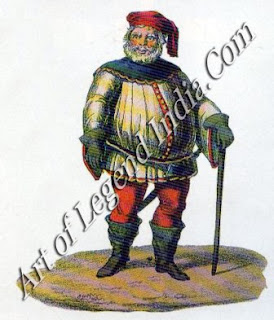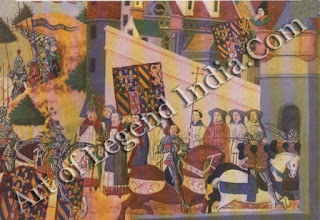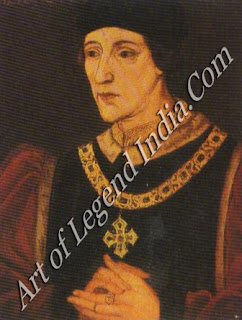Netherlandish Great Artist Jan Van Eyck - A year in the life 1429
Posted by
Art Of Legend India [dot] Com
On
1:56 AM
While
Van Eyck was fulfilling a delicate commission to paint a likeness of the
Portuguese princess Isabella, so that Philip of Burgundy could decide whether
or not to marry her, a young French girl was embarking on a military career
which would tip the balance of power between France and England.
As the New
Year, 1429, dawned, France was in a turmoil. The French crown was claimed for
the English boy king, Henry VI; and the claim seemed likely to be made good.
Leaving their Burgundian allies to guard the north-east, the English were
pressing south and had besieged the important town of Orleans. The French had
become demoralized by a string of English victories, and the dauphin, Charles
(last Charles VII), was still uncrowned; his legitimacy was in doubt and he was
only recognized as king south of the Loire. But the next few months were to see
one of the most remarkable phenomena of the late Middle Ages, the brief but
spectacular career of Joan of Arc, whose convictions changed history.
In
January, 1429, Joan was 17 years old, a simple farmer's daughter from the
village of Domremy in Lorraine. But from the age of 13 she had seen visions and
heard voices she identified as the Archangel Michael and Saints Catherine and
Margaret. Her voices told her that it was her mission to lead France to victory
and see Charles crowned at Reims.
The
previous summer, in 1428, she had tried to persuade the local French captain at
Vaucouleurs, 12 miles away, to help her in her mission. The captain did little,
and when the news of the siege of Orleans came through, she dressed in men's
clothes, had her hair cut short and, in January, 1429, set off to find the
dauphin herself. Early in March, she presented herself at the Chateau of
Chinon, where she proved immediately that she was either heaven-sent or
extremely intelligent. For Charles had told one of his courtiers to take his
place on the throne before Joan entered the room, but she had no trouble in
picking out the true king at first sight which may or may not have had
something to do with his notoriously unprepossessing appearance. At any rate,
Charles was won over, and after a thorough investigation into her religious
credentials, Joan was given a suit of white armour, a black charger and her own
banner and pennon, and sent to Tours to join the army. Joan is said to have
supplied her own sword, miraculously indicating the spot where one lay buried
behind an altar.
Whether
inspired or simply fanatical, Joan had immense charisma and even greater courage.
Where she led, the soldiers of France would follow. She was absolutely
convinced that God was on the side of France. The three letters she dictated
and sent to her enemies reflect her confidence 'You Englishmen, who have no
right in the kingdom of France the King of Heaven commands you by me, Joan the
Maid, to leave your strong-holds and return to your own country!'. By May, the
French had driven the English besiegers from Orleans and, as the French overran
the English bastilles, it was Joan who planted the first scaling ladder. A
series of brilliant victories followed. With the enemy badly shaken, Joan
spurred on the dilatory Charles to enter Reims, and in July he was finally
crowned in the Cathedral with 'the Maid of Orleans' standing by his side.
By the
end of the year, Joan's run of success began to falter and in the autumn she
was wounded in the thigh with an arrow though her fellow soldiers had to drag
her by force from the battlefield. But she remained an enormous inspiration to
the French and when the English captured her the following year they tried
desperately to have her discredited with a show trial, before allowing her to
be burned at the stake as a dangerous and influential heretic.
The
English dislike of Joan was understandable. At the beginning of 1429, they were
poised to overrun all France. By December, they had been pushed back into the
region round Paris and the alliance with Burgundy was less sound than it had
been before the maid intervened.
Writer
– Marshall Cavendish
Subscribe to:
Post Comments (Atom)















0 Response to "Netherlandish Great Artist Jan Van Eyck - A year in the life 1429"
Post a Comment